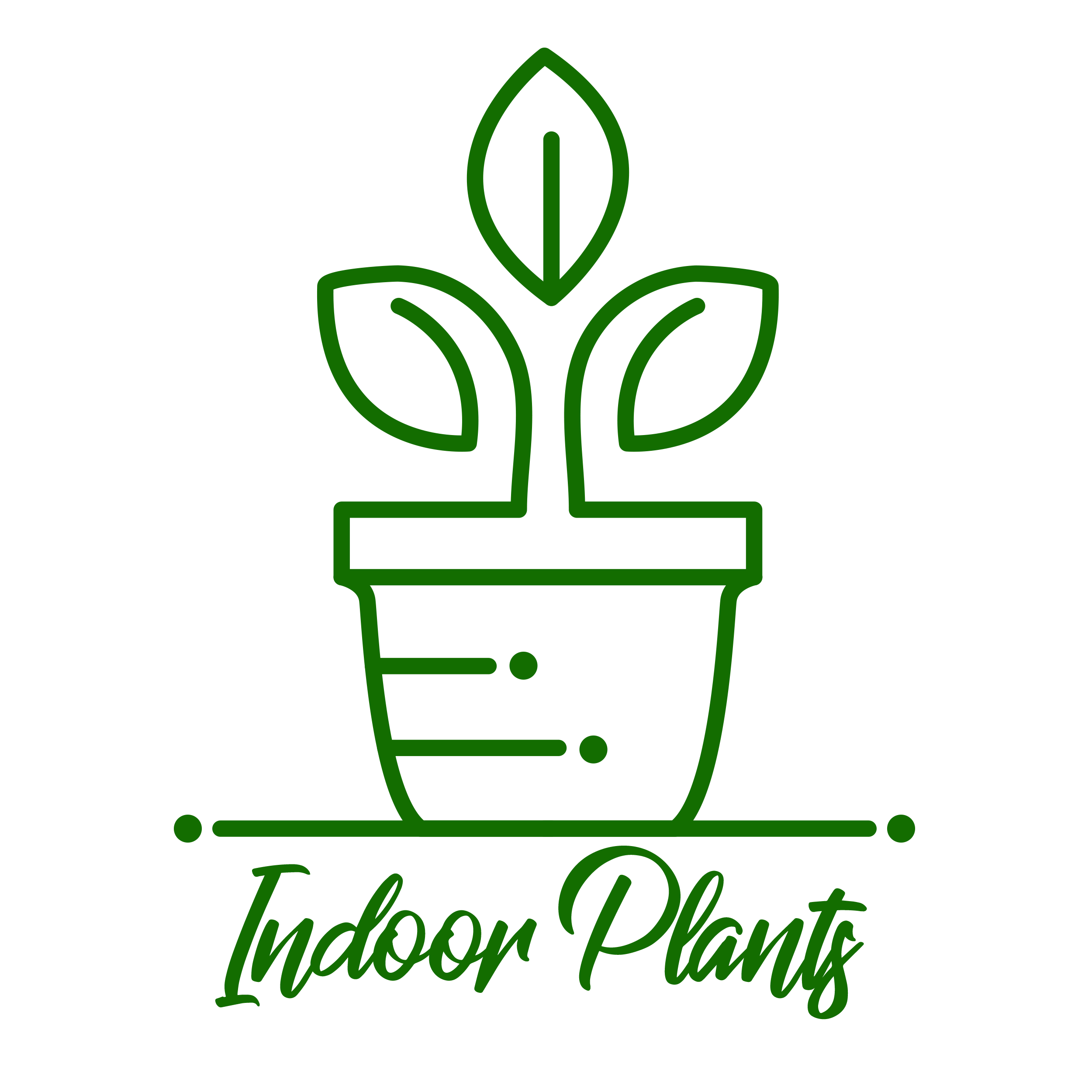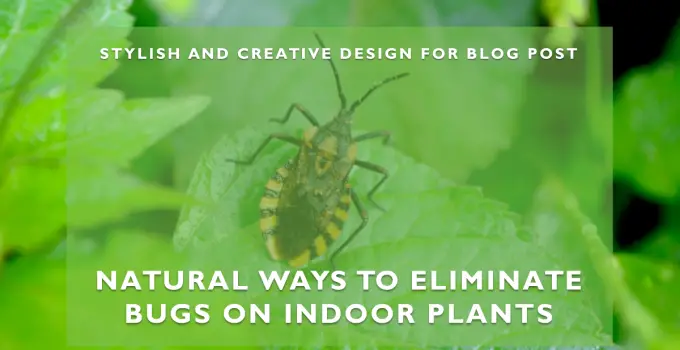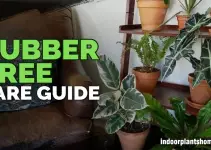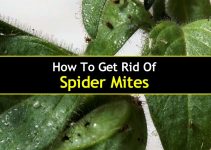AIPER Cordless Robotic Pool Vacuum, Self-Parking Technology, Portable, Ideal for Above-Ground Flat Pool up to 40 Feet
2% OffCutter Backyard Bug Control Spray Concentrate, Mosquito Repellent, Kills Mosquitoes, Fleas & Listed Ants, 32 fl Ounce
30% OffIndoor gardens invite relaxation until creepy crawlers start nibbling precious foliage. Before dousing plants in harsh chemicals, try these natural remedies safely and effectively eliminating infestations without toxicity. Common household ingredients coupled with cultivation best practices allow for rescuing leafy greens and herbs from pest destruction.
Overview of Controlling Indoor Plant Bugs

Managing indoor plants inevitably involves occasionally dealing with bug invaders feasting on tender plant tissues.
Natural bug control comes from:
- Using physical barriers blocking access
- Applying organic sprays safely deterring or eliminating pests
- Introducing predator insects to ingest plant eaters
- Adjusting environmental conditions reducing infestations
When applied promptly at first signs of infestation, these organic solutions quickly get growth back on track and deter future bug assaults. Always identify any species first before deploying targeted countermeasures.
Common Indoor Plant Bugs
While dozens of pest species can plague indoor plants, these bugs prove most prevalent:
| Pest | Type | Damage |
|---|---|---|
| Fungus gnats | Tiny black flies | Create tunnels in the soil, stunting roots |
| Spider mites | Tiny spiders | Speckle leaves with yellow spots |
| Aphids | Pear-shaped bugs | Distort growth-sucking sap |
| Mealybugs | White soft-bodied bugs | Transmit disease while ingesting juices |
| Scale | Flat, ovular shaped | Yellow foliage sucking nutrients |
| Whitefly | Moth-like flies | Weaken plants cause yellowing |
Match solutions to address the specific bug observed harming plants. Some remedies target multiple pests for complete protection.
Top 5 Natural Indoor Plant Bug Control Methods
Use these common household products diluted or added to soil to safely mitigate infestations:
| Method | Process | Target Pests |
|---|---|---|
| Nematodes | Mix microscopic roundworms into soil-eating larvae. | Fungus gnats, thrips |
| Neem oil | Mix 1 oz oil + 2 cups water spraying leaves. | Aphids, spider mites, scale |
| Insecticidal soap | Use 2-5 tbsp per gallon of water to fully cover leaves. | Mites, aphids, mealybugs, scales |
| Diatomaceous earth | Sprinkle abrasive powder on soil killing bugs through scratches and dehydration. | Ants, gnats, beetles |
| Alcohol solution | Mix 2 parts alcohol to 1 part water in a spray bottle. Test the small section first. | Mealybugs, soft scales |
Always check plant-by-plant pesticide sensitivity before applying any organic control methods. Adjust dilution strength accordingly.
Physical Protection Methods Blocking Infestations
Prevention solutions create barriers between bugs and plants:
- Place sticky traps near plants catching adults before they reproduce on leaves
- Remove pest shelter spots by pruning dead branches or leaves
- Check new plants extremely carefully for egg clusters before bringing them indoors
- Apply horticulture oil or petroleum-based dormant spray to create residual layers killing pests on contact
Vigilantly monitoring helps detect encroaching pests early before exponential population growth damages plants.
Safely Apply Pesticide Sprays Effectively
When using natural pesticide sprays:
- Always pre-wet plant foliage to prevent leaf burn absorption
- Test solutions on a small section first checking for negative reactions
- Apply early morning or at dusk avoid hot sun intensifying effects
- Spray undersides of leaves directly hitting hiding bugs
- Use mist setting for uniform coverage without excess dripping
- Allow leaves to fully dry overnight before watering to sustain pesticide contact
- Repeat applications every 3-5 days while bugs remain active
- Combine methods attacking eggs, larvae, and adults at once
Ensuring plant health and safety while combatting infestations eliminates problems at the roots.
Top 5 Indoor Garden Cultivation Tips for Deterring Bugs
Prevent pests from ever gaining footholds by:
1. Letting Soil Dry Out Between Waterings
Fungus gnats lay eggs in damp soil thriving on moisture. Allowing pots to dry out on top stops breeding cycles.
2. Circulating Air Daily
Lightly rustling leaves and soil using fans maintain an unfavorable environment keeping populations down.
3. Setting Out Yellow Sticky Traps
Adult insects flock to the color yellow. Traps positioned near soil catch scouts before infesting plants.
4. Wiping Leaves With a Wet Cloth
Shiny-leaved plants like adhesive residue left discouraging aphids from landing and crawling around.
5. Adding Sand Layer on Soil
An abrasive 1/2-inch sand layer deters crawling pests and dries out fungus gnat larvae.
Vigilant monitoring paired with cultivation adjustments keeps ahead of infestations before they escalate out of control.
How Diatomaceous Earth Safely Eliminates Bugs
Diatomaceous earth (DE) provides a highly effective yet gentle pest control solution made from fossilized marine phytoplankton. The powdery abrasive substance kills soft-bodied insects through:
- Dehydration – bugs absorb DE loosening protective outer layers
- Lacerations – spiky grains pierce exoskeletons causing bodily water loss
- Ingestion – eating DE scratches digestive tract linings leading to dehydration
For plants, mix a 1/2-inch layer atop the soil to deter crawling pests. Its silica composition poses no toxicity or chemical contamination threats. DE solutions approved as organic pesticides include:
- Safer Brand Diatomaceous Earth – Food-grade powder carrying OMRI organic certification
- Harris Diatomaceous Earth – Powdered grade offering 70% better coverage
- Miracle-Gro Organic Choice – Blend with natural active ingredients aiding application
Check warnings some pet breeds (like chinchillas) can suffer lung irritation inhaling clouds of airborne dust over time. Otherwise, DE makes for an incredibly affordable, safe, and effective natural pesticide in all environments.
Integrated Pest Management (IPM) Plan for Prevention
Integrated Pest Management (IPM) combines multiple natural control approaches custom-tailored to specific indoor garden scenarios. An IPM plan incorporates:
- Identifying every bug species accurately
- Tracking infestation location patterns
- Monitoring population growth rates
- Employing multiple deterrent methods targeting egg, larvae, and mature life stages
- Adjusting environmental conditions denying pests comfort
- Leveraging natural predatory insects benefits
Executing a prevention-focused IPM plan reduces reliance on toxic controls while maximizing plant protection from identifiable pest threats. Home gardeners should record observations and then deploy timed solutions disrupting seasonal infestation cycles.
How Horticultural Oils Block Bugs on Contact
Horticultural oils work on contact with soft-bodied insects, preventing future infestations. Solutions like:
- PureSpray Green – Organic insecticidal & fungicidal horticulture spray derived from canola oil
- Monterey Horticultural Oil – Mineral-based smothering spray mixed at a 1-2% ratio
The oil’s mode of action involves:
- Blocking air holes in exoskeletons suffocating insects
- Disrupting normal bodily fluid functions deteriorating bug tissues
Apply oils spraying early morning or nightfall to avoid leaf sunscreen. Test a small area first watching for negative reactions. Slowly coat all surfaces including leaf undersides and stems with a fine mist reaching hidden bugs. The residue deters adhesion and penetration of soft pests for up to four weeks as the oil dissipates.
Top Tips for Selecting Indoor Plant Varieties Resisting Bugs
Seeking out indoor plant types genetically resistant to prevalent pests reduces reliance on chemical interventions. Look for:
- Leaf hair – Fuzzy leaves discourage soft scales and mites from attaching
- Thick cuticles – Waxy or hardened outer layers prevent sap-sucking
- Rapid growth – Quick regeneration outpaces pest damage from gnawing and tunneling
- Strong aromas – Toxic odors emitted deter various species
- Poisonous compounds – Insects sickened or killed after ingesting plant chemicals
Examples of plants exhibiting natural pest-resistant qualities include:
- Spider plant
- Silver plectranthus
- Rubber plant
- Dragon tree
- Pitcher plant
- Rosemary
Conclusion
When spotted early, indoor plant pests get eradicated quickly thanks to simple natural solutions without resorting to toxic chemicals. Mix up organic DIY sprays like neem oil while adjusting indoor garden care routines to hinder infestations holistically. And remember prevention works best implemented before discovering harmful pests thriving unchecked. A vigilant integrated pest management approach rescues precious potted plants from invasive destruction.


























